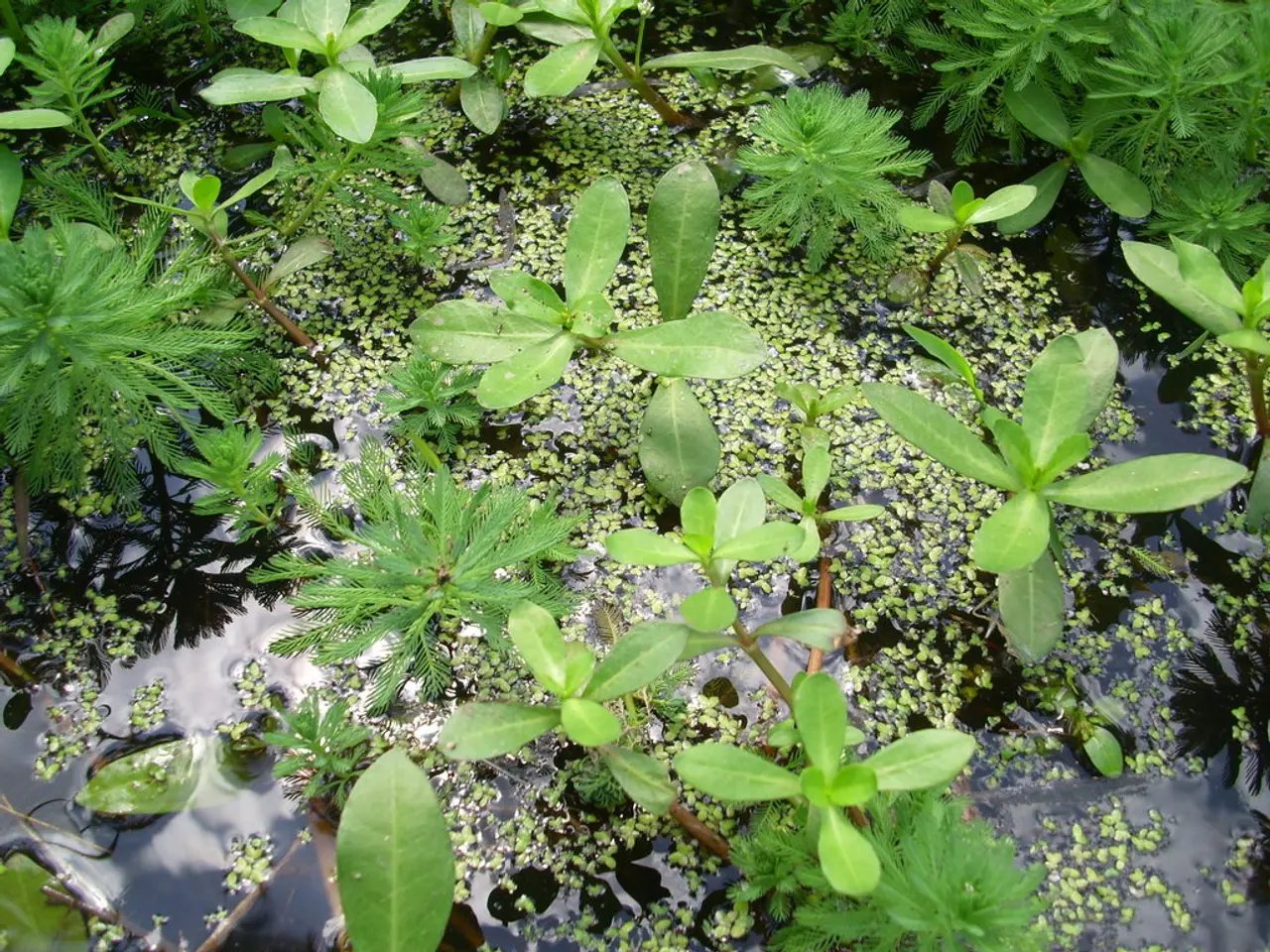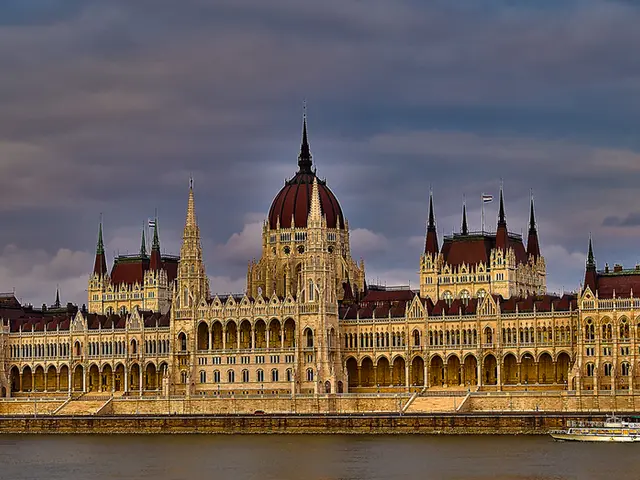Toxic Bloom of Algae Spotted in Ponds in Rhineland-Palatinate and Saarland - Toxic Blue Algae Found in Swimming Lakes Across Rhineland-Palatinate and Saarland
In recent times, several lakes in Rhineland-Palatinate and Saarland have been affected by blue-green algae, a type of cyanobacteria. This development has necessitated increased attention and precautions for those using these water bodies.
The Rhineland-Palatinate State Office for the Environment (LfU) has reported significant increases in the concentration of blue-green algae in the last measurement at the Postweiher in the Westerwald. As a result, the LfU strongly advises against swimming there. Warning level 1 for blue-green algae has been exceeded at the Waldsee Argenthal in Rhineland-Palatinate, where increased values of blue-green algae chlorophyll have been recorded. Sensitive people and especially young children should also avoid the water at the Bärenlochweiher in the Pfaelzerwald due to it exceeding the second warning level for blue-green algae.
In the Saarland, increased attention is required for blue-green algae at the Losheimer Stausee and the Bostalsee, but swimming is still possible there. However, it's essential to note that exposure to blue-green algae can cause health problems in humans and animals due to the toxins they release. These toxins can lead to skin irritation and rashes, gastrointestinal illnesses, liver damage, neurotoxic effects, and respiratory issues in severe cases.
It's important to avoid ingesting water from affected lakes and not use it for irrigation of vegetables during the blue-green algae bloom. For the most current and localized information, including affected lakes and recommended precautions, monitoring updates from official regional environmental or health authorities in Rhineland-Palatinate and Saarland are necessary.
Before visiting a lake, it's advisable to inform oneself, preferably via www.badeseen.rlp-umwelt.de. While the city of Mainz and Saarbrücken are located in Rhineland-Palatinate and Saarland respectively, no specific mention of their lakes being affected by blue-green algae is made in the current information.
Weather plays a role in the concentration of blue-green algae in lakes, and the exact reasons for the recurring occurrence in these regions are not yet clear. Despite this, it's crucial for everyone to prioritise their health and safety when enjoying outdoor activities near lakes during the summer months.
- In light of the recent increase in blue-green algae concentration in various lakes, it would be wise for residents and visitors in Rhineland-Palatinate and Saarland to consult scientific studies on environmental factors that influence the growth of these cyanobacteria to better understand and mitigate this issue.
- Health-and-wellness advocates call for increased awareness of the potential health risks associated with blue-green algae, prompting a need for environmental-science research to identify the causes and find solutions to prevent future outbreaks and their adverse effects on human and animal health.




